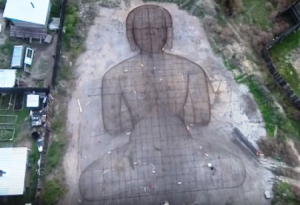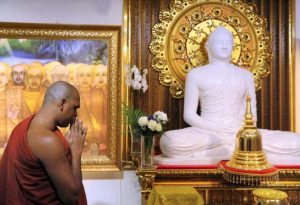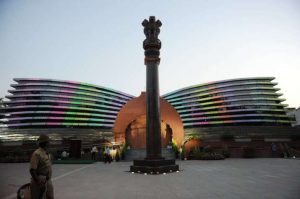
Local government specialists and archaeologists have unearthed an ancient stupa at the historic port site of Palur, Ganjam District, which dates to the early spread of Buddhism on the Indian subcontinent and beyond: specifically, across the Bay of Bengal along maritime trade routes to modern-day Sri Lanka and Southeast Asian nations like Myanmar, Indonesia, Malaysia, and Thailand.
Excavations were carried out by staff of the Odishan Institute of Maritime and South East Asian Studies (OIMSEAS) under the Department of Culture at Palur (also called Prayagi). Excavations have been ongoing since August and September 2023, with the initiative being aimed at ascertaining the nature of Odisha’s maritime trade relations with Southeast Asia. Determining the material culture that developed and determining the trade routes that criss-crossed the Bay of Bengal are priorities for OIMSEAS.
Diana Sahu, writing for The New India Express, noted: “While the date of the stupa located atop Palur hill is yet to be officially ascertained, it is believed to have been built in the 1st or 2nd century CE.” (The New India Express) On her Instagram account, she shared an image of the stupa, which resembles a mound of stones, with a range of antiquities recovered from the sites. They include: “semi-precious stones, coins, rings, terracotta figurines and conch shell bangles and rings.” (The New Indian Express)
Sunil Patnaik, senior archaeologist and the director (excavation) of government-run OIMSEAS, told The New Indian Express: “The stupa stands on a rectangular platform measuring 12 metre in length and is three metre wide. The remains of the stupa rises up to 5.5 metre [sic] . . . Pieces of exotic foreign red polished ware have also been found from Palur.” (The New Indian Express)

The port of Palur has a long history of trade, communication, and contact with diverse civilizations on the Indian subcontinent and beyond. The earliest written reference to Palur comes to us in the form of a mention by a Greek sailor called Ptolemy, who named it as Paloura (Odisha Review). More broadly, Odisha has been associated with the region of Kalinga, which Ashoka the Great conquered in 261 BCE. The Buddhist presence may well already have predated the newly discovered stupa.
Prof. Monika L. Smith, Navin and Pratima Doshi chair in Indian Studies at UCLA, is an ancient economic historian and has extensively analyzed material finds from Palur. She notes that, judging from ancient pottery discoveries it was already an important port connector as early as antiquity, from the 4th to 3rd century BCE. “The trade contact is evident from the finding of the Buddhist stupa. The East Coast route is ancient,” said Prof. Smith. “Discovery of ancient port sites along this route like Tamralipti, Manikapatana, Gourangapatana, Kalingapatana, Visakhapatam has provided evidence on a brisk overseas trade relationship of ancient Odisha with far off countries.” (The New Indian Express)

Since classical antiquity, Palur has been a hub of international trade, evidenced by fragments of Chinese celadon ware, Roman rouletted ware, and amphora pieces (Odisha Review). During the period of the 1st and 2nd centuries CE, Odisha would have been under the dominion of the local Kalingan Mahameghavahana dynasty, which succeeded Ashoka’s conquering Maurya Empire and ruled until the 4th century. By this time Buddhism had ceded courtly favor to Brahminical and Jain priests, but the Mahameghavahana royal family, like Ashoka, embraced all faiths and permitted business to be done by adherents of all traditions. This policy very likely helped to propel Buddhist influence to Southeast Asia, establishing Sanskrit and monastic influence at the courts of Indonesia, Myanmar, and elsewhere by the turn of the Common Era.
See more
2,000-year-old Buddhist stupa discovered at Palur port site (The New Indian Express)
Ports in Ancient Odisha: Historical Perspective (Odisha Review)
Related news from BDG
“Tree and Serpent” Exhibition Brings Buddhist Art to the Met in New York
1,000-Year-Old Buddhist Archaeological Site of Pilak Included in New Tourism Circuit for India2,300-Year-Old Buddhist Elephant Statue Unearthed in India












